Nubaria Region Sheep Production, Egypt
Confinement livestock practices are often associated with large factory farms and overcrowded conditions. The photo of a successful working farm in Egypt demonstrates that this does not have to be the case. Although grazing land is not readily available in this part region the livestock are allowed to graze produce residue seasonally. When they do need to be confined to protect the crops and at night their quarters are large and cool. The primary income on this farm is from exporting produce. The approximately 1,000 sheep and goats living on this farm are fed surplus produce and crop residue adding value to potentially waste products. Trees were incorporated into the design of the confinement yards to improve quality of life for the animals and to provide natural shade. The sheep are pastured on the produce fields between crop rotations. The goats are raised totally in confinement due to the difficulty of containing them within fences and away from the crop fields.
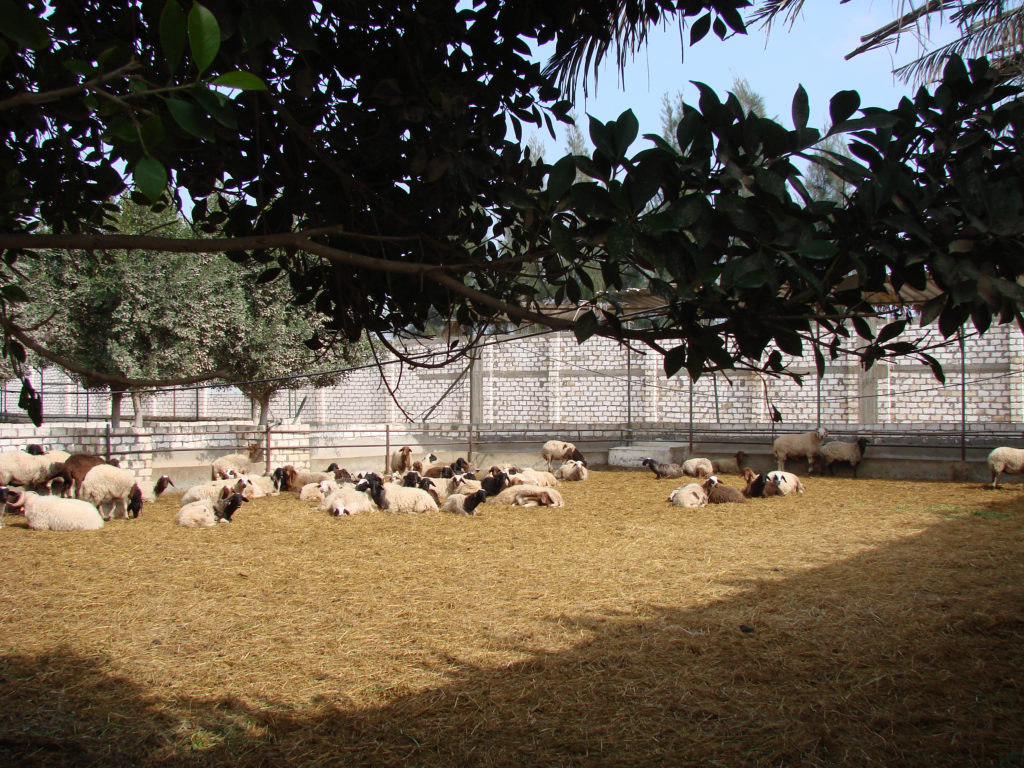
The group of ewes in the photo below eagerly greet the wagon loaded with fresh clover. It will be pitch forked by hand into their feeders. This farmer does not have available land to allow for grazing. All feed is purchased and delivered daily. Feed and the associated labor costs are usually the highest expense for livestock producers worldwide. This farmer has a great deal of labor expense due to his feeding method and feeder layout.
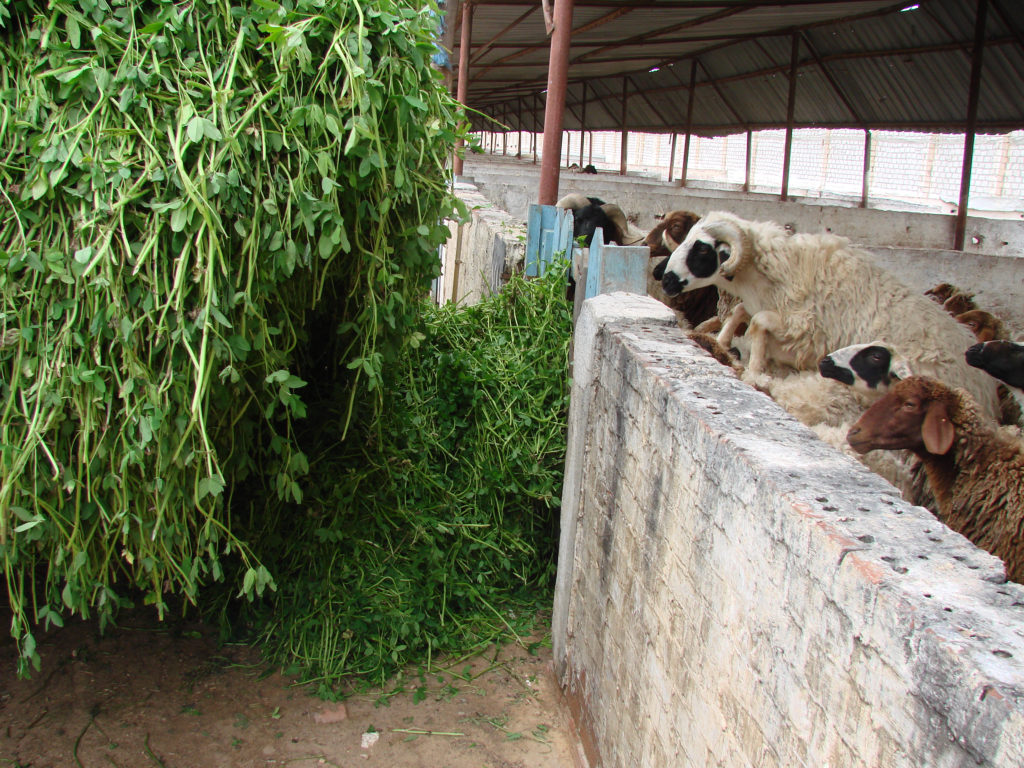
Fresh clover is the forage of choice for sheep and goat farmers in this part of Egypt. The transportation of fresh feed to confined animals is expensive. Although labor is readily available the tasks involved in raising animals in confinement require more attention to sanitation and balanced rations than grazing. This farm has poorly designed feeders as the livestock can climb into the feeders. The feed also has to be carried across the holding area to the far wall by hand. Much is dropped on the ground and wasted in the process. The watering system is also open to contamination from fecal material. (Note the ewe standing in the feeder below and contaminating all that she steps on.)
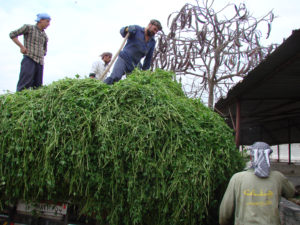
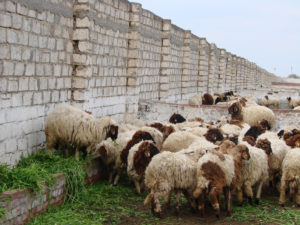
Fitting livestock into a complimentary agriculture system, such as produce production, allows for the business below to be very profitable. A percentage of this profit is used to improve the environment for his livestock and workers. The business man/farmer also provides breeding stock and mentoring to others in his community with fewer resources, at no cost, with the goal of improving Egypt’s sheep and goat industry. The sheep graze crop residue during most of the day and are held in airy shelters the rest of the time. The shelters are not fancy but very adequate for Egypt’s climate and temporary holding needs.
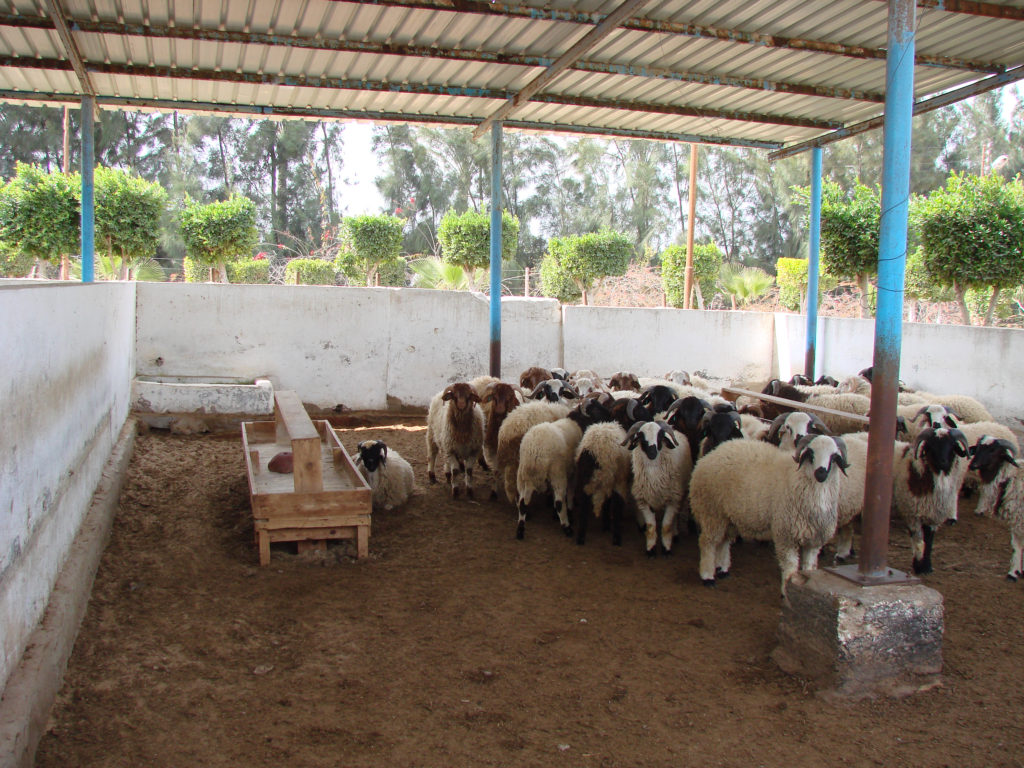
The Zaraibi goats below are known for their long dropping ears and characteristic underbite that can make eating difficult. Newborn goats often need to be helped to suckle due to this desired deformity. The young kids in the photo on the lower right have been weaned from the does and are in their own group.
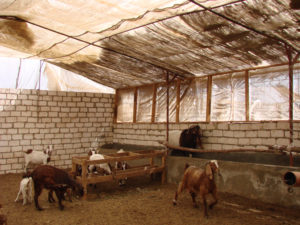
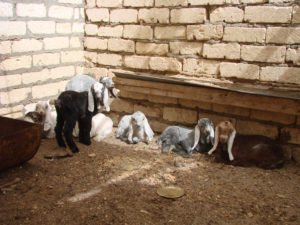
Pastoralism, or the nomadic life style of moving as one with the flock towards rainfall and fresh pasture, is rapidly disappearing around the world. In Egypt agriculture land is limited and expensive so grazing opportunities are becoming rare. This is partly due to extended and unusual droughts, political unrest, roads, and the privatization of land disrupting traditional grazing patterns. The lands traditionally grazed by nomadic tribes are now cut up by roads, development and private irrigated farms.
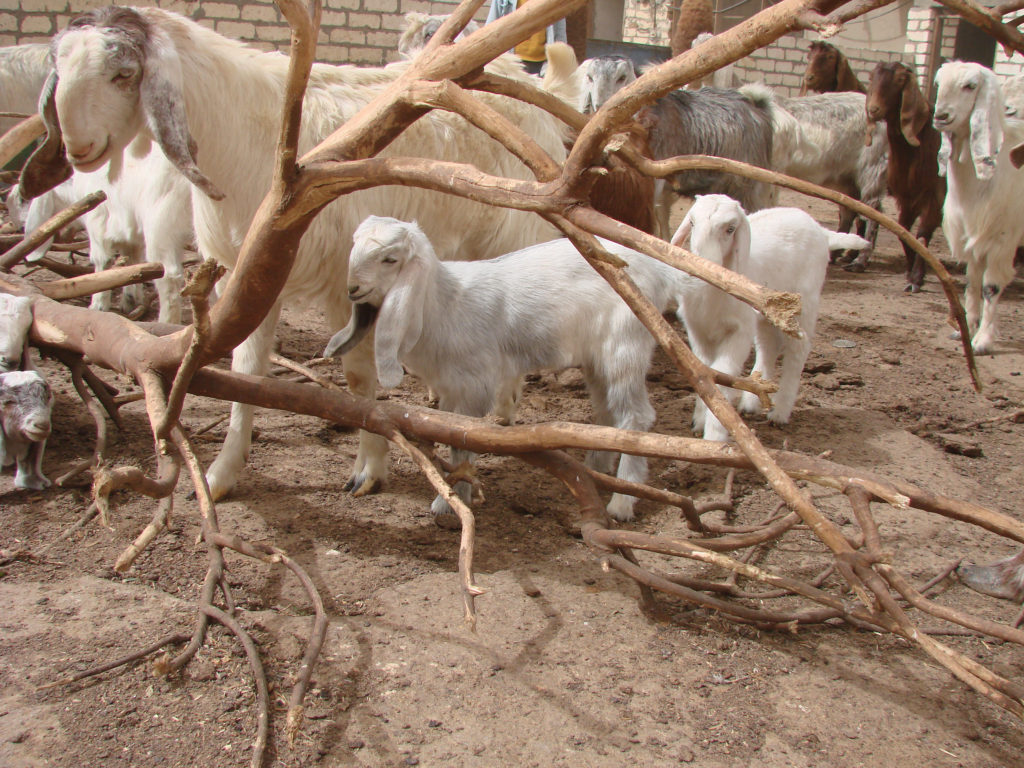
When grazing animals are raised in confinement they no longer have the opportunity to pick and balance their diet. Sanitation and health can become critical issues as sheep and goats shift from being partners with their herder to being completely dependent upon the hired agricultural employee. Some of the advantages of small ruminants such as being able to survive on rough terrain not feasible for crops, is lost when feed needs to be raised on valuable land, loaded, hauled, fed-out, and manure removed from yards and shelters.
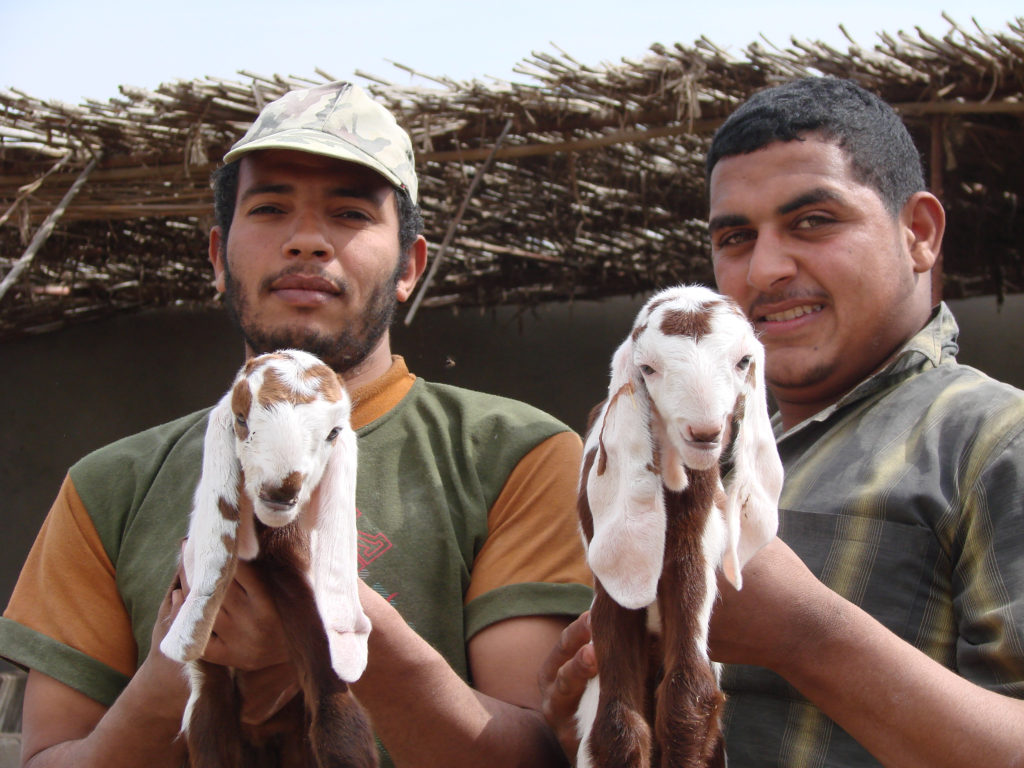
This Farmer to Farmer project was hosted by Egypt’s first association of sheep and goat producers, Egyptian Association for Sheep and Goats (EASG). The majority of the EASG members are beginning goat and sheep farmers with small land holdings. One of the outcomes of this project was to connect the new farmers with established goat and sheep producers and meat marketers for continued mentoring and support.
